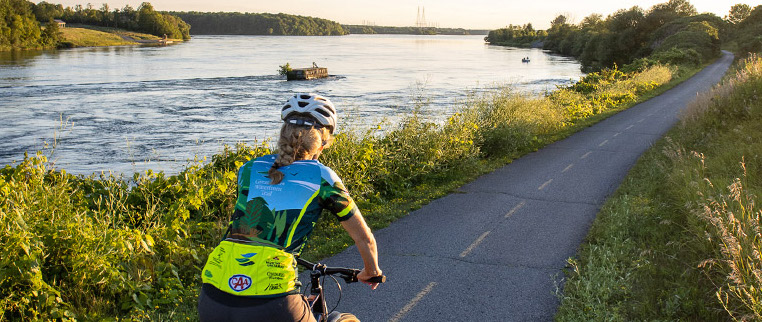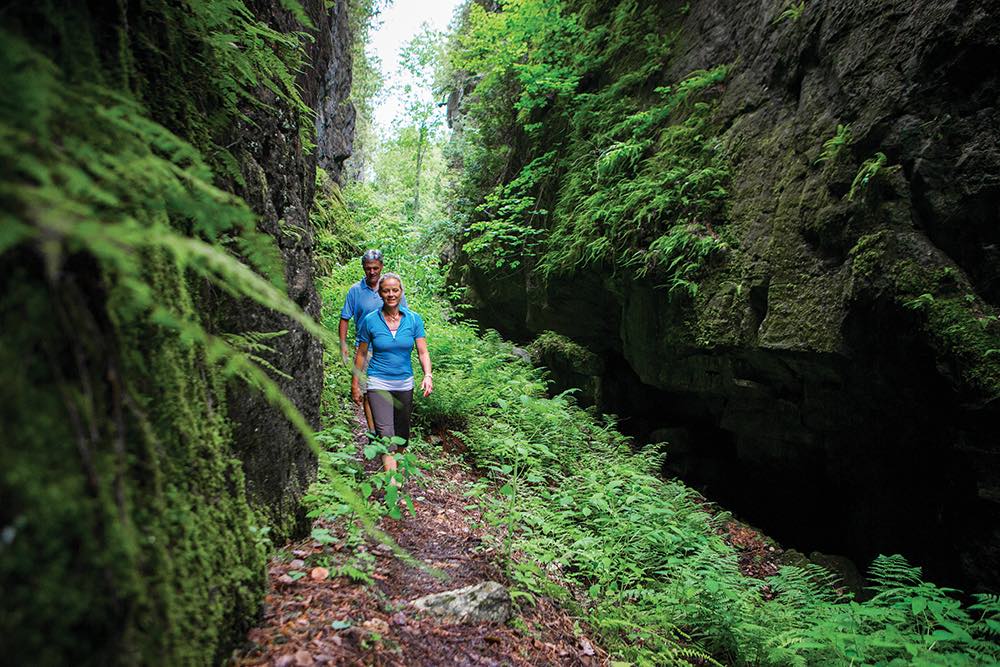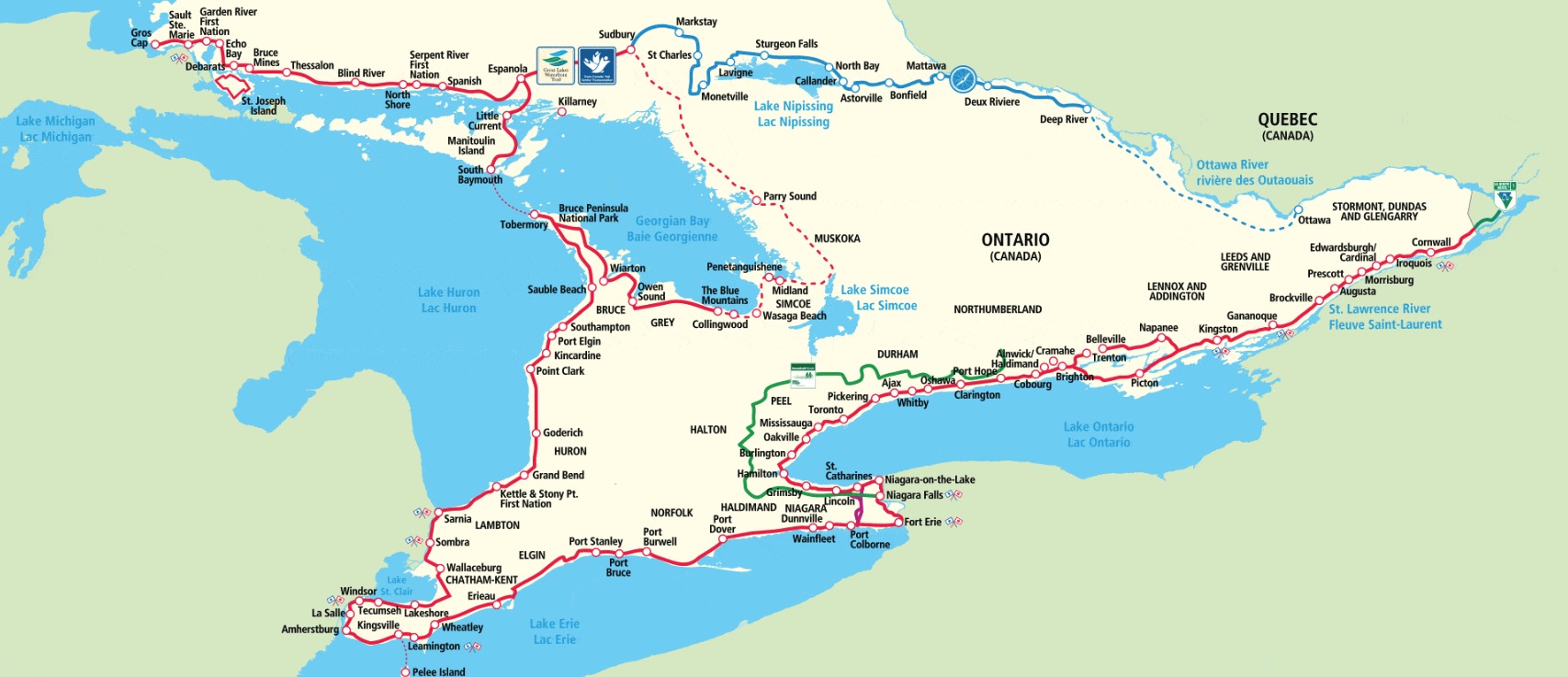
The Great Lakes Waterfront Trail near Cornwall, Ontario.
According to numerologists, the number seven is associated with insight, intuition, truthfulness, introspection, intellect and wisdom. Perhaps that’s why seven presenters spoke for seven minutes each at The Walrus Talks Nature, an event held in Toronto in March sponsored by The Walrus, Canada's foremost national magazine of comment. And since footpaths are how most people gain access to nature, it’s not surprising that the idea of trails figured largely in the presenters’ brief presentations.
Nature’s contribution to physical and mental health, as noted by Dr. Melissa Lem, a medical doctor and director of the B.C. Parks Foundation, has become accepted wisdom. She refers to it as “the fourth pillar of health” (in addition to a healthy diet, exercise and good sleep.). Lem cited a fascinating study: “Neighborhood greenspace and health in a large urban center.” Carried out in Toronto and reported in the Journal of Scientific Reports, the research found that “having 10 more trees in a city block, on average, improves health perception in ways comparable to an increase in annual personal income of $10,000 and moving to a neighborhood with $10,000 higher median income or being 7 years younger.”
A trail becomes something worth fighting for when it affects one’s favoured place to walk the dog.
The role of trails in connecting people and places is paramount to Marlaine Koehler, Executive Director of the Waterfront Regeneration Trust, which administers the 3,600-kilometre Great Lakes Waterfront Trail. It links 170 communities and First Nations, 520 waterfront parks, 266 beaches and all four of our Great Lakes. Koehler told the audience the trail breathes life into communities that are often “only known as the names on Highway 401 exits.”
Koehler stood out from most of her fellow presenters when she took a step outside what were largely existential discussions about the importance of nature and trails: What they do for us and how they can serve us better. She credited the Great Lakes Waterfront Trail for protecting and restoring the riparian habitat along its length, much of which is now crowded with residential, commercial and industrial development.
Koehler’s fellow presenter, Dianne Whelan, who accomplished the amazing feat of travelling (on foot, bicycle, snowshoes, skis and canoe) an astounding 27,000 kilometres of the Trans Canada Trail – and has made a film about it entitled 500 Days in the Wild – similarly recognized trails for their role in guarding nature. The seventh of the seven speakers, Whelan’s seventh of the seven lessons she took away from her expedition was that fostering a relationship with nature will help save the planet. And, that trails facilitate this interaction.

"There wouldn’t be a Bruce Trail if it didn’t stitch together these fragments of public land."
While walking Ontario’s 900-kilometre Bruce Trail along the Niagara Escarpment, one of Canada’s most unique UNESCO biosphere reserves, I learned a similar lesson. As I hiked for seven or eight hours a day for over 40 days, it became apparent to me just how crucial the Bruce Trail is to the Niagara Escarpment’s ongoing protection.
The Bruce Trail, and countless other footpaths, keeps public land in the public realm. This “ribbon of wilderness,” as the Bruce Trail Conservancy refers to it, follows innumerable unopened road allowances, hydro corridors and abandoned rail lines. It crosses myriad municipal, provincial and national parks and conservation areas. As I wrote in my book, 40 Days & 40 Hikes: Loving the Bruce Trail One Loop at a Time, there wouldn’t be a Bruce Trail if it didn’t stitch together these fragments of public land. The mere presence of this much-loved and oft-walked trail — stretching from the toe of the Niagara Peninsula to the tip of the Saugeen-Bruce — is akin to telling all levels of government: Mess with it at your peril. Selling a road allowance to developers may go unnoticed unless, that is, the Bruce or other trail happens to run through it.
 Overview of the Great Lakes Waterfront Trail.
Overview of the Great Lakes Waterfront Trail.
In this way, the Bruce Trail provides the Niagara Escarpment with another layer of protection from urban development, aggregate extraction, wetland drainage, habitat loss, pollution and the glut of other negative impacts on wildlife, air quality and water cleanliness. “Hands off” is a common response among hikers, especially locals, if there is a proposed interruption of their trail use. A piece of land that may seem inconsequential — despite the key role it plays as a corridor or habitat for wildlife — becomes something worth fighting for when it affects one’s favoured place to walk the dog. Hikers become caretakers.
In a sane world, the contribution of trails and the nature they pass through to personal and community health should guarantee their protection. But in our mad world of ever-expanding suburbs, aggregate quarries and super highways, governments flout this logic and similarly dismiss the seventh lesson of the seventh speaker at the Walrus event: We need nature if we are to save the planet.
So, ask not what trails can do for you. Ask what you can do for trails. ō
LINKS
The Great Lakes Waterfront Trail >>
The Bruce Trail Conservancy >>

NICOLA ROSS is an avid hiker, paddler, cyclist and author of 12 books, including the bestselling **Loops & Lattes series of hiking guides. Her articles have been published in The Walrus, The Globe and Mail, Explore, Bruce Trail magazine, Mountain Life, Avenue, Ontario Nature and this publication. Nicola resides atop the Niagara Escarpment in Caledon, Ontario.

Add new comment